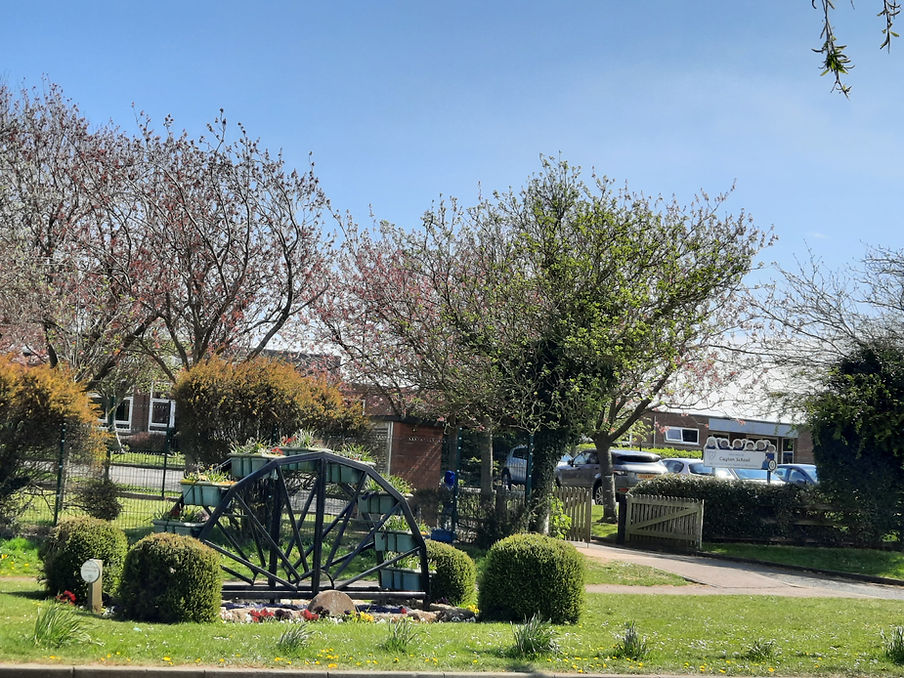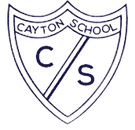

Learn from yesterday, seek today and aim for tomorrow
“There are high expectations for all pupils. Pupils’ attendance is high. Pupils’ conduct in and around school is exemplary.”
“Parents and carers are committed to the school. They are overwhelmingly positive about the impact the school has on their children.” “Pupils thrive in a carefully developed, nurturing environment.” “Pupils have an appetite for learning.”
“All decisions at Cayton are taken with the pupils’ best interests at their centre.” Ofsted November 2024
IMPORTANT: Please note that we are a nut-aware school. Nuts should not be brought into the building due to allergies.
Being a Musician at Cayton
At Cayton, we we emphasise musicality over talking in our curriculum and our lessons. We see the exploration of music in primary school as a moral imperative and a force for good beyond the scope of the lesson itself. Music plays its part in delivering content and value to all subjects within the curriculum and it is an essential component of the school’s pedagogical approach. Our pedagogy ensures that children from all backgrounds and musical experience should have the opportunity to learn a musical instrument; to make music with others; to learn to sing; and to have the opportunity to progress to the next level of excellence if they wish to.
We believe that Music:
-
Helps young people make sense of a complex and dynamically changing world and how society, the economy and environment combine to bring about change.
-
Explains where places are, how places and landscapes are formed, how people and their environment interact.
-
Explores how a diverse range of economies, societies and environments are interconnected.
-
Examines natural resources and their sustainable use.
The national curriculum for music aims to ensure that all pupils:
-
perform, listen to, review and evaluate music across a range of historical periods, genres, styles and traditions, including the works of the great composers and musicians
-
learn to sing and to use their voices, to create and compose music on their own and with others, have the opportunity to learn a musical instrument, use technology appropriately and have the opportunity to progress to the next level of musical excellence
-
understand and explore how music is created, produced and communicated, including through the interrelated dimensions: pitch, duration, dynamics, tempo, timbre, texture, structure and appropriate musical notations
Our curriculum reflects these beliefs and has been researched to ensure a deep and consistent pedagogy in the teaching of Geography. Through the delivery of orchestra lesson and the use of digital software to produce and compose music, children have the opportunity to perform and explore music in fun, innovative and stimulating ways.
“One good thing about music, when it hits you, you feel no pain.”
Bob Marley (1945-1981)
The Learning Journey
Early Year
In Early Years, children start by learning repetitive chants and songs through nursery rhymes. They start to find the pulse of a piece of music and discuss rhythm and pitch of notes and instruments. They learn that music can influence our mood and feelings. They have multiple opportunities to perform through assemblies, QR codes and videos shared on our learning platform. Performances are recorded so children can watch themselves back to start to analyse and evaluate their own performances.

Through the repetition and teaching of songs, children develop their metacognition and retention of knowledge and words. They access a range of instruments to explore the making of sound and finding the pulse of a song.
Key Stage One

Through Key Stage 1, children start to talk about the feelings associated with music and learn about how music fits into the world and various cultures through appraisal work. They build on their understanding of finding the pulse of a piece of music in various ways and improvise with their own movements and actions. They start to explore the tempo of pieces of music and describe them using key vocabulary. They learn new terms linked to the dynamics of a piece of music.
Children begin to recognise instruments from the orchestra and learn their associated sounds. They join in with pieces of music through call and respond both vocally and using instruments. They learn to sing, rap and chant and demonstrate good posture when singing songs from memory. They learn to play their own part in a wider group when singing in unison and begin to follow a leaders direction. They explore pitch and continue their work on dynamics and tempo. In composition, children learn to record their own compositions using symbols and simple notation. The explore standard notation including crotchets, quavers, minims and explore various scales and combinations of notes.
They rehearse and play simple melodic instrumentals using glockenspiels using a range of notes. They have opportunities to improvise with their instruments and using question and answer phrases to structure responses. They are taught to understand the difference between creating a rhythm pattern and a pitch pattern. They compose using digital software and music technology and use story telling to compose their work. They use graphic symbols to record and relate these to different sounds and length of notes.
When performing, they add actions to and interchange between vocal and instrumental. They understand the difference between reheaersing and performing and reflect and evaluate back on a performance through the use of QR code videos.
Lower Key Stage Two
Through Lower Key Stage 2, children share thoughts and feelings about music and begin to explore lyrics of songs. They identify different time signatures and use a wide range of actions and movements to move in time. They identify different instruments they can hear across genres and make connections with styles and sounds. They recall memorable phrases in music and can identify major and minor sounds. They recognise music from a range of genres from different time periods by the sounds they can hear and discuss the structures of songs.

Pupils sing as part of a choir and sing different styles in unison with others. The rehearse and perform with others and demonstrate good posture when singing. They recall and copy back simple melodic phrases and follow a leader or conductor. They become more aware of intonations of sounds and how they should be expressed.
With notation, children explore standard notation including sharps and flats and read and respond to various notes: quavers, crotchets, minims, semibreves and paired quavers. They identify musical symbols on a stave and understand their meaning. They learn to play using various instruments including glockenspiels and recorders and use various scales to perform to increase their note knowledge. They improvise over grooves and drones and learn to become more controlled when doing this. They learn key musical terminology that they apply to music and describe different pieces. They compose using digital software and music technology and use graphic symbols to record on a stave both on screen and on paper.
The children compose over chord progressions and adapt their music by listening back using simple dynamics in a piece. They compose using a range of scales and include sharps and flats in the relevant scales. When performing, pupils include singing and playing of instruments and learn to work individually, in small groups and as a whole class. Performances are also showcased during class assemblies. They understand how to play their own part and where it fits in to the whole performance. All the knowledge gained in Lower Key Stage 2 enables pupils to succeed as they move into Upper Key Stage 2.
Upper Key Stage Two
During Upper Key Stage 2, children extend on their knowledge of appraisal. They justify a personal opinion with reference to Musical Elements. In different pieces of music, they listen to a wider range of time signatures including those with complex formations. They discuss and explore the structure of music and songs in detail and use this to structure and compose their own songs. They identify major and minor tonality in chord triads and link this to the feelings of a piece of music. They explain main themes in music and explain the purpose of different genres. They learn to recognise a whole range of genres across all time periods including what is trending now. They learn about a range of musical components including intros and outros.
With singing and voice, children learn to sing in different time signatures and scales and learn and rehearse songs from memory. They learn to self-correct if they make mistakes and develop confidence as a soloist. They sing expressively with attention to breathing, phrasing and posture.

Pupils respond to a conductor or leader and talk confidently about pieces of music. They sing with and without accompaniment applying their singing abilities to sheet music and notation. They explore a full range of notation and symbols and recognise and explore how notes can be grouped together. They further understand the differences with notes and show an increasing proficiency when using bar lines.
They play tuned and untuned instruments and Year 5 have a bespoke music offer where they have 1 hour, weekly lessons with a specialist music teacher who delivers an orchestra session. These lessons compliment each other and work well in collaboration with the music taught through the Charanga lessons.
They play simple melodic instrumental parts and show greater confidence in playing instruments.
Pupils learn a range of musical terms with their correct Latin names and explore more complex scales such as the flat and sharp scales. They experiment with a range of dynamics and improvise to a groove whilst responding to the beat.




















